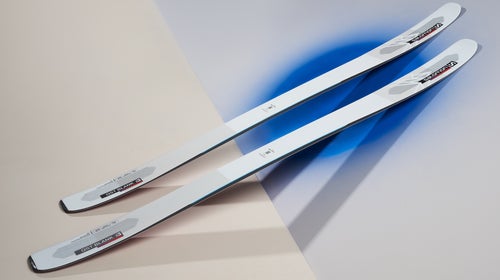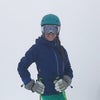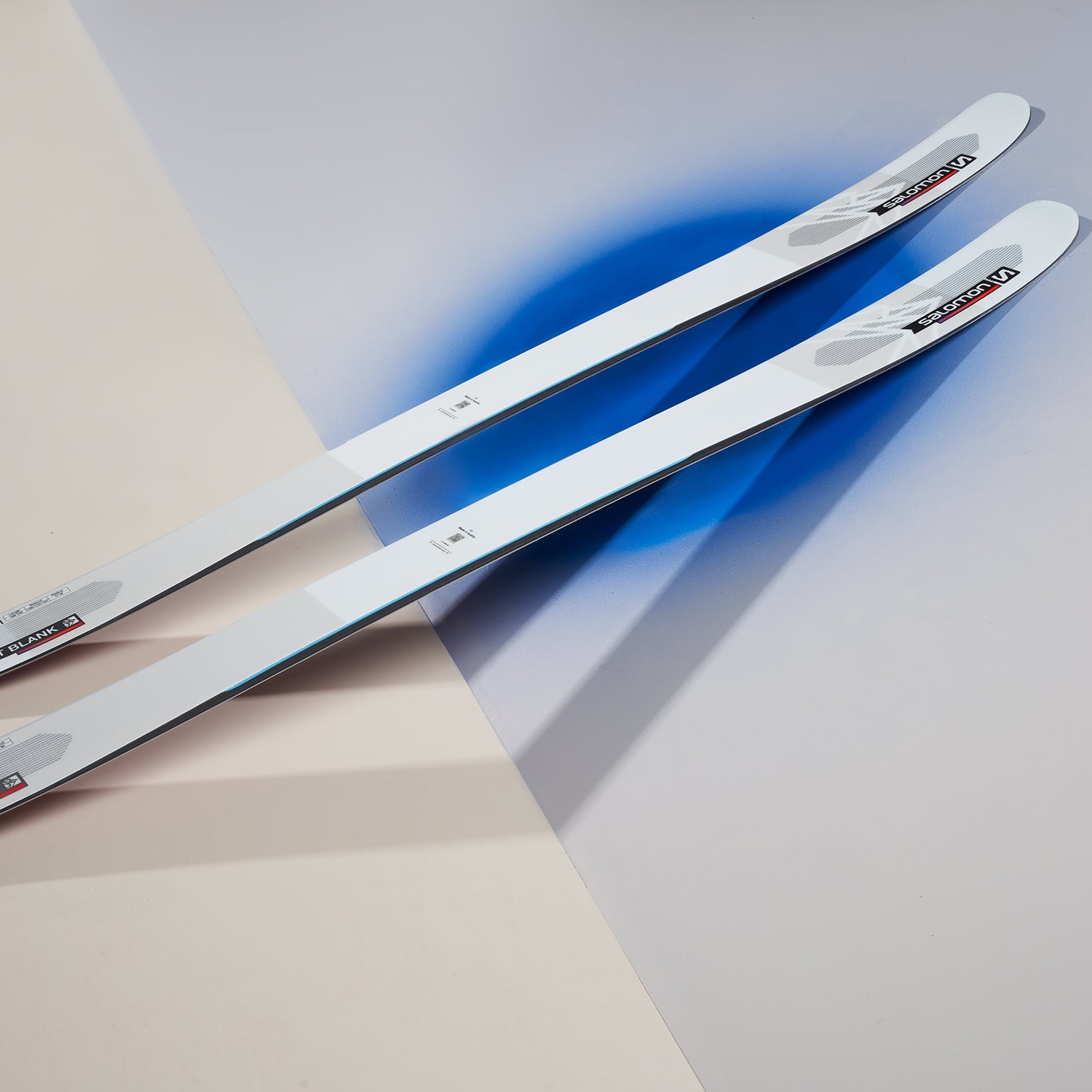We’re in the midst of a golden age of ski design. The early aughts’ mad-scientist days of experimentation in rocker, taper, width, weight savings, and supermaterials are behind us. A focus on craftsmanship and balance has produced a wave of incredibly capable skis that damn near anyone can ride. We took a few hundred pairs out for a thousand runs in Steamboat last winter. Here are our top picks.
Salomon QST Blank ($900)
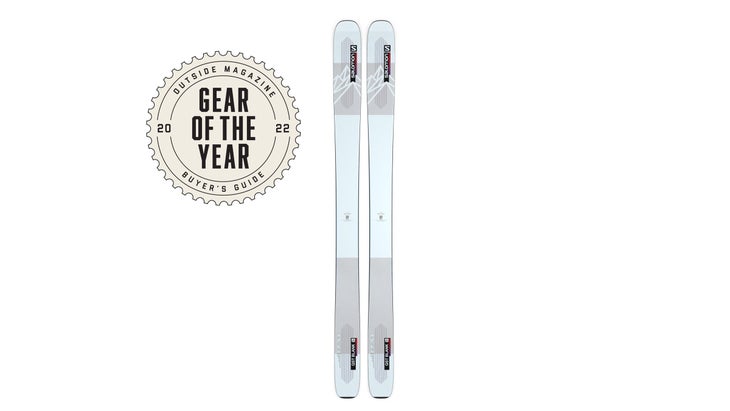
On paper, the Blank seems like a powder specialty ski, and it is. It’s 112 millimeters across at its narrowest point and sports ample tip and tail rocker, plus a lightweight build complete with high-tech materials instead of metal. But it won our Gear of the Year award because it’s also wildly versatile. Sure, it porpoises in and out of powder and spring slush energetically, and it’s fat enough to float in bottomless snow. But it also has enough sidecut (17-meter turn radius) and oomph, especially in the belly of the turn, to make groomed skiing truly fun. That power comes courtesy of Salomon’s unique double sidewall, which places a second piece of ABS material horizontally underfoot, above and perpendic-ular to the sidewalls, to push even more energy to the edges. That doesn’t mean this ski is excessively burly. The rockered silhouette, light-but-damp cork in the tip and tail, and a fibrous weave of carbon and flax allow you to pivot and smear in tight terrain with just a hint of steer-ing, no matter how much snow there is. It’s still a big-day ski, but you wouldn’t be bummed to get stuck on packed snow if the storm didn’t live up to the hype. “I couldn’t get over how nimble and fun this fat ski was to rip on in between storms and on spring corn,” said a tester. “If you mounted it with a hybrid binding like a Shift you could ski it in-bounds and out.” 138/112/127
Men’s All-Mountain
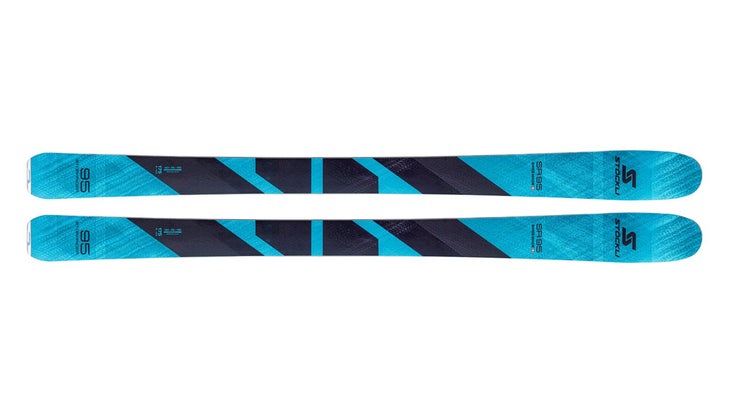
Stöckli Stormrider 95 ($1,149)
There’s a reason the new Stormrider 95 is so much pricier than other mass-market skis. Much of the work is done by hand, so building one pair takes days, not hours. This means that, if you can avoid blowing them up on the rocks, the Stormriders will outlast less expensive fare. Here, Stockli also shaved weight, which is crucial in fatter skis. Designers figured out how to make solid metal edges just as thick as the ones they use on their frontside skis, while saving weight in the unseen bits that attach inside the ski. At the core, paulownia wood shaves precious grams without sacrificing snap. New this year, Stöckli added a 100 percent recycled polyethylene material to the tip to strengthen turn entry while cutting swing weight. Modest tip and tail rocker and shock-absorbing sidewalls help provide a looser ride on soft snow and more durabil-ity off-trail. On-piste, that translates to a damp ride quality that never feels dead. “The Stormriders have no speed limit,” said one tester, “but you can ski them slow too.” 132/95/123
Women’s All-Mountain
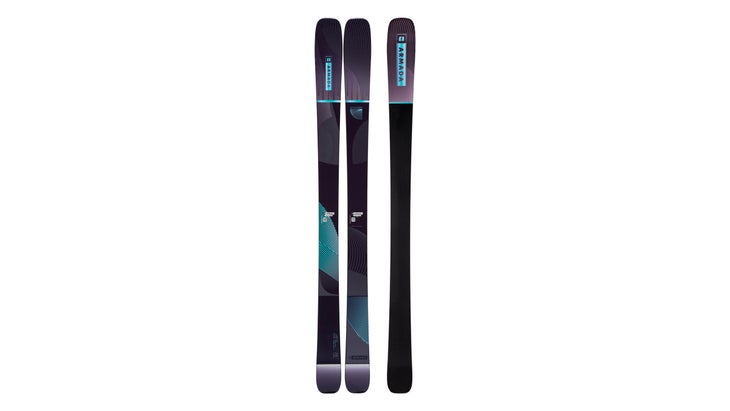
Armada Reliance 92 Ti ($775)
When you’re ripping hot laps with friends on groomed snow and chopped-up resort powder—the kind of conditions most of us ski most of the time—you’re tipping the skis up on edge, sinking into the belly of the turn, and then tapping into the tail to drive you through an arc. It’s called directional skiing. This is what the Reliance 92 was designed for. It’s plenty fat and rockered for third-buckle-deep powder on top of packed snow, but not too much so for carving. On the contrary, articulated titanium alloy banding on top of a lightweight karuba-wood core means you can count on it to hook up and hold on when the powder turns to hardpack. “Long turns, short turns … it’s energetic but damp and stable all at once,” said a tester. Ultra-versatile models like this tend to wow our crew, and for good reason: it’s a ski you can ride most days without thinking about fatter or skinnier skis. 131/92/117
Men’s All-Mountain Frontside
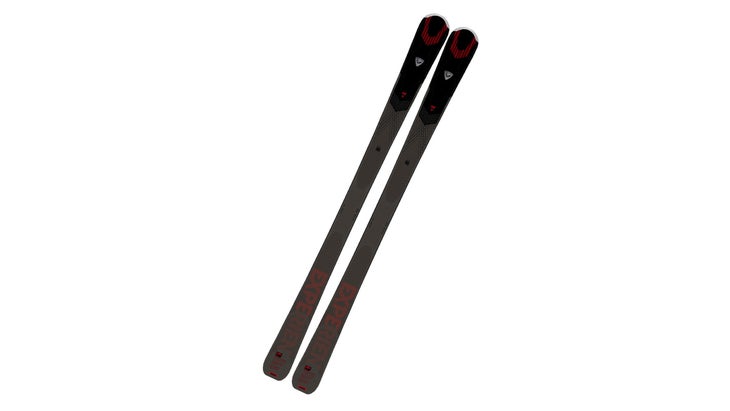
Rossignol Experience 86 Ti ($900)
We’ve long loved Rossignol’s frontside Experience line because it delivers serious hold and stability without demanding too much piloting. So it was with some trepidation that our test crew hopped on the new 86 Ti. It features far more rocker than the original Experience 88, to boost performance off-trail and make the ski even easier to turn. We got over our doubts pretty quickly. “It’s still a fully juiced and carvy Experience,” said a tester, “but with this much rocker it’s way more fun off-trail.” There are other benefits: when you add more tip rocker to a powered-up ski, you can check yourself more easily by throwing it sideways and scrubbing speed. Because Rossignol didn’t overdo it with the rock-er, the 86 Ti’s effective edge length grows as you achieve higher edge angles and sink into the meat of the turn. By that, we mean you don’t feel the rocker when you’re actively in a turn. Who should buy a pair? If you spend 70 percent of your time on groomed trails and the remainder on some other form of packed snow, the 86 Ti is for you. 132/86/120
Sponsor Content
Mountain Hardwear Men’s Boundary Ridge™ Jacket ($475)
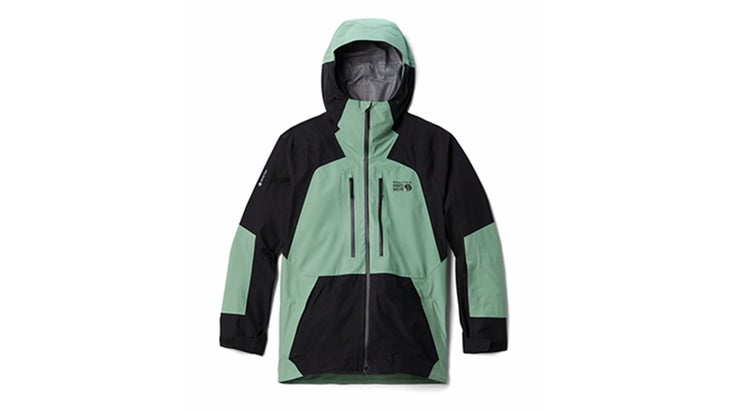
Inspired by the best days of ski season, this jacket has the durability to take on your biggest drops and most daring trips. With 3L Gore-Tex shell fabric, reinforced in key areas, this is a layer designed with purpose and easy to adjust for any occasion.
Women’s All-Mountain Frontside
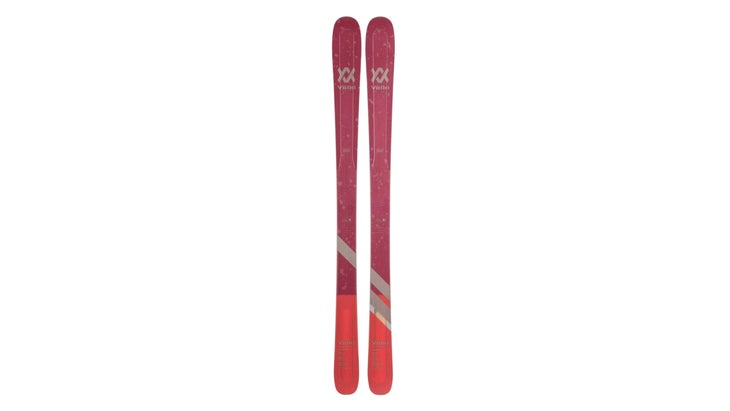
Völkl Kenja 88 ($775)
Forget about all the marketing buzzwords and industry jargon for a minute. Every ski designer’s goal is to make skis that feel so intuitive that they’re like extensions of your body, capable of charging or riding easy and of feeling both damp and energized. To our women’s test crew, which worked through 20 pairs of all-mountain frontside skis, that dream whip is the Völkl Kenja 88. “It’s so intuitive that it seemed to know where I was going to arc my next turn before I did,” said a tester. “It’s super precise, crisp, and lively, but you don’t have to hammer all day either.” Credit goes in part to Völkl’s sidecut, which essentially incorporates three different turn radii into the ski to make mixing up the turn shape easier. To save weight, designers cut out the center of the titanium alloy sheeting sandwiched inside the base. Most of the metal is concentrated over the edges, where it transfers the most power. 129/88/111
Men’s All-Mountain Powder
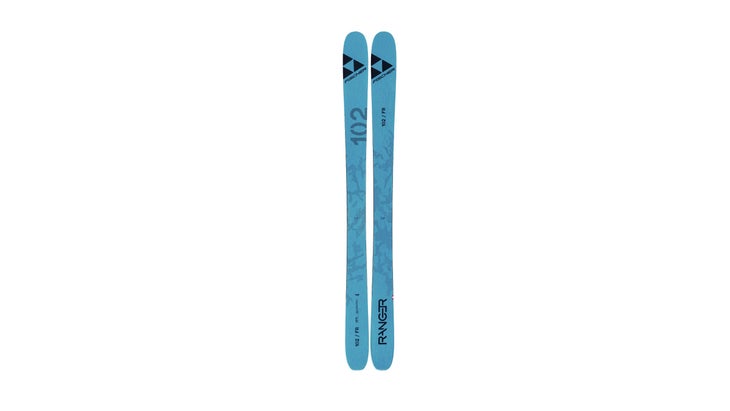
Fischer Ranger 102 FR ($800)
At 102 underfoot, the Ranger FR appears too skinny to be a legit powder ski. But thanks to a twin-tip design with ample rocker, it’s plenty for most deep in-bounds days—18 inches or less on top of a firm base. Powder skied off? A wood core with two sheets of titanium alloy means you can burn endless hot laps on groomers. In short, it’s a true one-ski quiver for western mountains, equally at home shredding corduroy, exploring off-trail, and slashing backcountry powder. A former Olympian who has been testing skis for three decades pondered if this Ranger was “the best one-ski-quiver weapon ever.” It might just be, but only if you ski five to ten miles an hour faster than most folks. It’s not an experts-only ski, but it really comes to life the harder you drive it. It’s ideal for those who ski off-trail 50 percent of the time and favor carving turns as opposed to merely pivoting, no matter the terrain. 136/102/126
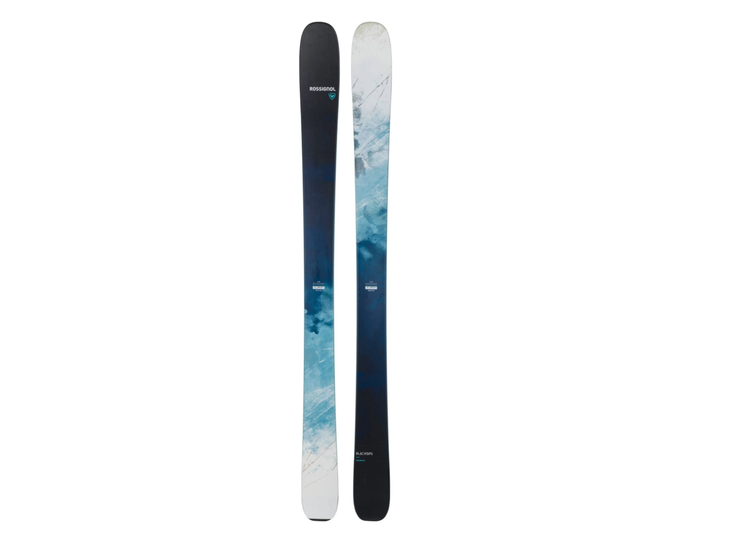
Rossignol Blackops W RallyBird Ti ($900)
“The RallyBird Ti effing arcs,” said a tester who charges way beyond her weight class. “Snappy energy at the end of each turn,” said another. Among the women’s skis, this one is the benchmark for what we call accessible power: anyone can butter it around and have a blast at lower speeds, but as confidence grows and edge angles increase, the ski’s performance does too. The balanced feel comes courtesy of old-school construction (vertically laminated hardwood with traditional sidewalls—no cap) and a commitment to get the flex of each length just right through prototyping and testing. But it doesn’t hurt that the RallyBird Ti features two tuned damping systems that minimize chatter. The first embeds two vertical layers of rubbery material into the core to keep the RallyBird Ti contouring the terrain instead of chattering. The second is a layer of rubber to quiet still more vibration. All that adds up to one of the best performing all-mountain powder skis we’ve ever tested. 137/102/127
Big-Mountain Backcountry
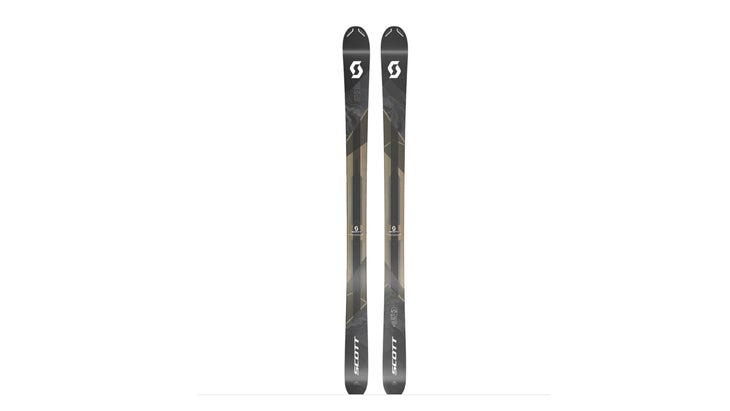
Scott Pure ($850)
When you’re skiing fast on big terrain, far from lifts and helicopters, the ability to carve groomers takes a back seat to stability in tricky, fluctuating snow. In those conditions, most people are also happy to have a heavier ski that slows you down on the skin track but boosts confidence on the descent. In the U.S. we refer to this kind of terrain as big-mountain backcountry, which is exactly what the Pure was designed for. Scott’s team set out to build a backcountry ski that was stout and stable enough for charging hard above treeline in the Alps. The Pure favors high speeds in wide-open terrain, with a long turn radius underfoot that yields predictability in weird backcountry snow where too much sidecut gets hooky. A mix of titanium alloy, aramid, and carbon fiber keeps it stout yet energized at high speeds. “This is a powerful ski,” said a tester capable of putting a 190 through its paces. “It is best suited to clean terrain free of bumps and trees. It needs to be unleashed to thrive.” 142/109/128
Backcountry Freeride
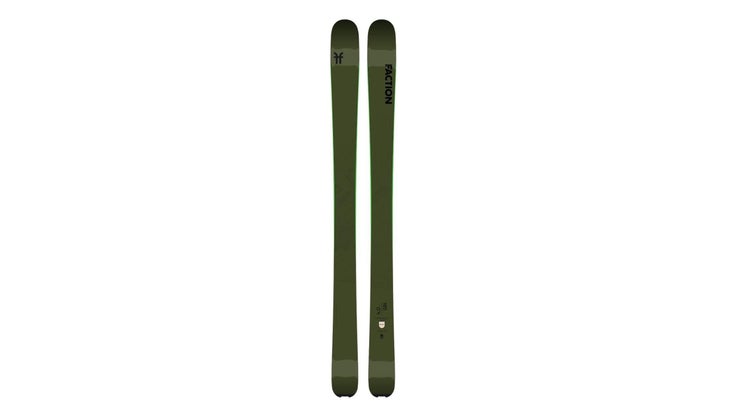
Faction Agent 4.0 ($799)
Faction’s Agent line was built to offer the loose and playful feel of smearable all-mountain skis with some of the weight savings and versatility of backcountry fare. That’s particularly true with the extra-plump Agent 4.0. It’s built around a karuba-wood core to save weight (one ski rings in at 1,800 grams) and eschews metal for the same reason, so it’s manageable on the uptrack. Turn it around, though, and all that rocker and width makes even the weirdest backcountry snow easy to ski. Thanks to the robust tip and tail rocker, you can pivot and slarve the 4.0 all day long. In-bounds, mounted with a hybrid binding, the 4.0 is a light and lively slasher for the biggest powder days of the year. In the backcountry, it lets you ski like you’re in-bounds. “You might think a ski this fat is overkill in the leg-serviced backcountry,” said a tester. “But think of it as an insurance policy. It’s capable of turning a shit day in bad snow into a dream session.” 141/116/131
